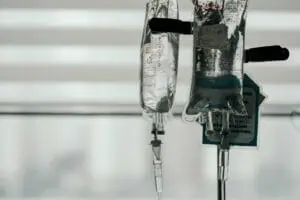Intravenous infusion (iv drip) is a medical procedure that involves the administration of fluids straight into a patient’s vein. Intravenously administered medications and, electrolyte solutions aid in the patient’s rapid and simple recovery. It is a more rapid and effective method of administering drugs and fluids. Only licensed and trained health care personnel, such as infusion nurses, are permitted to provide intravenous infusions.
There are health care services available that provide IV saline fluids at home in Dubai. So, continue reading if you want to know about the need for intravenous infusion. Besides, you will also learn about type of IV fluid, the safety of IV therapy, and the procedure to receive IV saline fluids at home.
When Is Intravenous Infusion (iv drip) Required?
Intravenous infusion is required to correct electrolyte imbalances, replenish fluid volume, treat bacterial and fungal infections, provide blood transfusions, and administer medicines. This technique is frequently used to complete parenteral nutrition and treat dehydration by using an intravenous drip (iv drip) and a bag containing water, electrolytes, and dissolved salts.
Additionally, certified infusion nurses assist you in receiving vitamins, antifungal medicines, and antibiotics, intravenously for the treatment of acute illnesses.
Moreover, IV fluid has 100% efficiency because fluid is directly absorbed into the circulation compared to oral fluids with 50 to 60% efficiency that take time to enter circulation and are not fully absorbed.
Intravenous infusion of medications administered by a skilled infusion nurse is necessary to treat chronic and painful diseases such as multiple sclerosis, cancer, congestive heart failure, Crohn’s disease, immunological deficiencies, and rheumatoid arthritis.
Types of IV fluid at home
You can receive different types of IV fluids at home.
IV injections
IV injections, alternatively referred to as IV bolus, involve the rapid injection of a single dosage of medication into a vein, for example, IV required during emergency medical situations.
IV infusions
IV infusions are used to provide treatment over time both gently and constantly. It is available in two forms: Drip infusion and Pump infusion.
Drip infusions
Drip infusions, referred to as drips, rely heavily on gravity to provide a steady amount of treatment over time. It involves hanging a fluid bag from a drip stand that is connected to your IV line. The fluid container contains the treatment contents while the drip chamber is used to keep track of the drip rate and to prevent air from entering the bloodstream. Drip rate is a term that refers to the estimation of the therapy rate of administration by measuring the number of drops per minute.
Pump infusion
Pump infusion is the process of attaching a pump to your IV line to more precisely regulate the distribution of medicine into your body over time. Syringe infusion pumps and volumetric pumps are two types of pump infusions.
Syringe infusion
Syringe infusion pumps are pumps that regulate the rate at which a syringe’s plunger is pushed, thereby regulating the rate at which therapy is administered over time.
Volumetric pumps
Volumetric pumps combine IV drips with pumps to control infusion rate.
Moreover, an I.V. drip typically takes between 30 and 45 minutes and its effects are nearly instantaneous.
Is IV Therapy Safe to Provide at Home?
Constant hospitalization may be a stressful and disturbing experience. Home IV infusions can result in an earlier discharge, fewer hospitalizations, and a reduction in the risk of hospital-acquired infections, all while keeping patients comfortable.
How Can I Receive iv drip at home?
Home health infusion services will assist you in receiving intravenous infusions comfortably at your home. Before your treatment, a qualified physician or medical practitioner will consult with you via Telehealth. Then, qualified medical experts (registered nurses and physicians) will connect you to an IV specifically prepared to alleviate your condition or to administer the wellness treatment you’ve requested.
It is important to mention here, not only are expert and experienced home infusion nurses are educated to deliver intravenous infusions in a sanitary manner but they are also trained to monitor the patient’s response to the infusions continuously.
The procedure of administrating IV saline fluid at home
To administer these fluids, a tiny needle (named a butterfly) will be placed beneath your skin. It is often placed in the abdomen, thigh, or arm. A transparent sterile plaster will be used to fix the needle. Throughout your treatment, you will be visited at least twice daily by a nurse skilled in drip care. If you believe you require advice or assistance with a treatment-related issue, contact your team that will be treating you.
To know more details about the available IV therapy at Medilife Click Here




